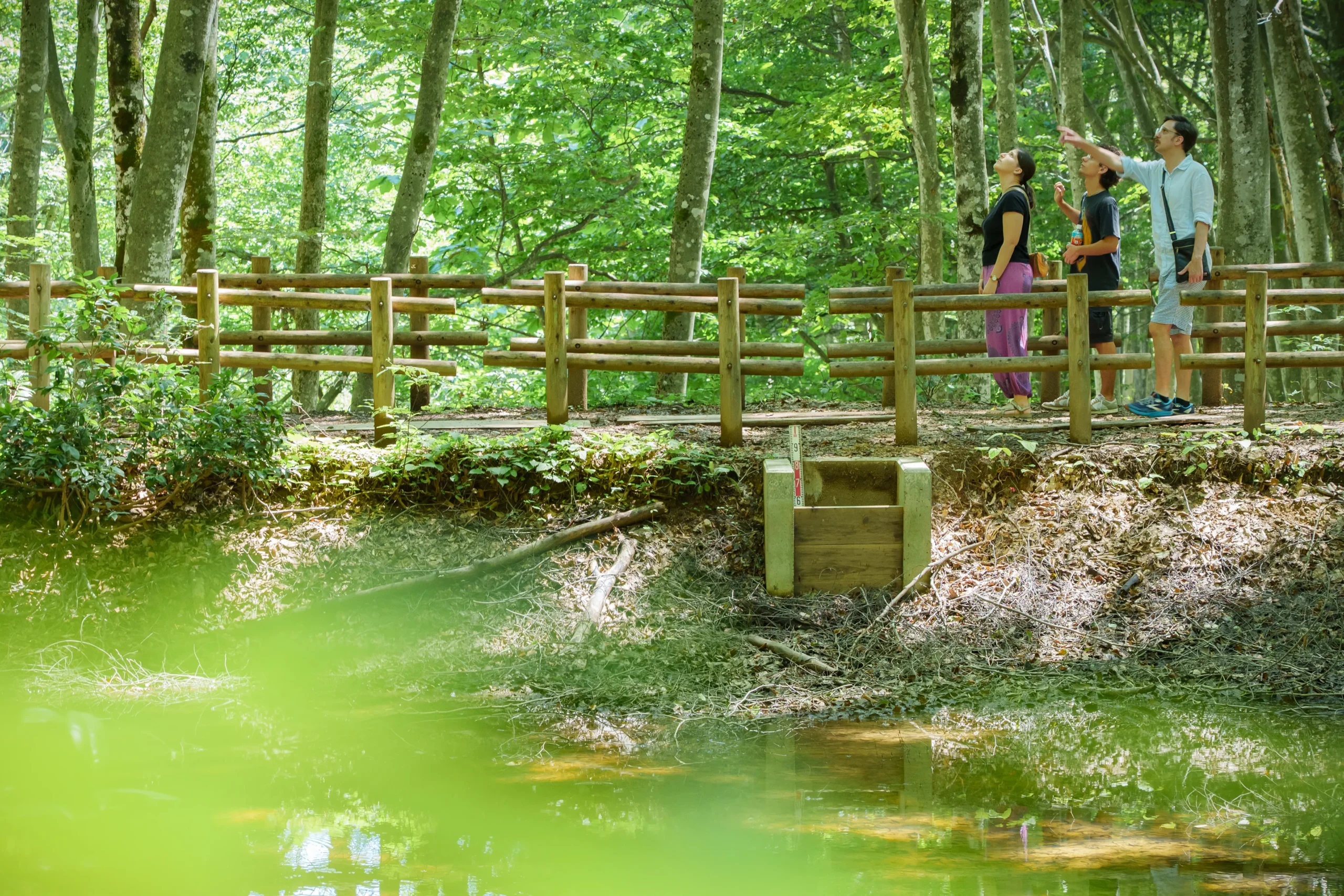

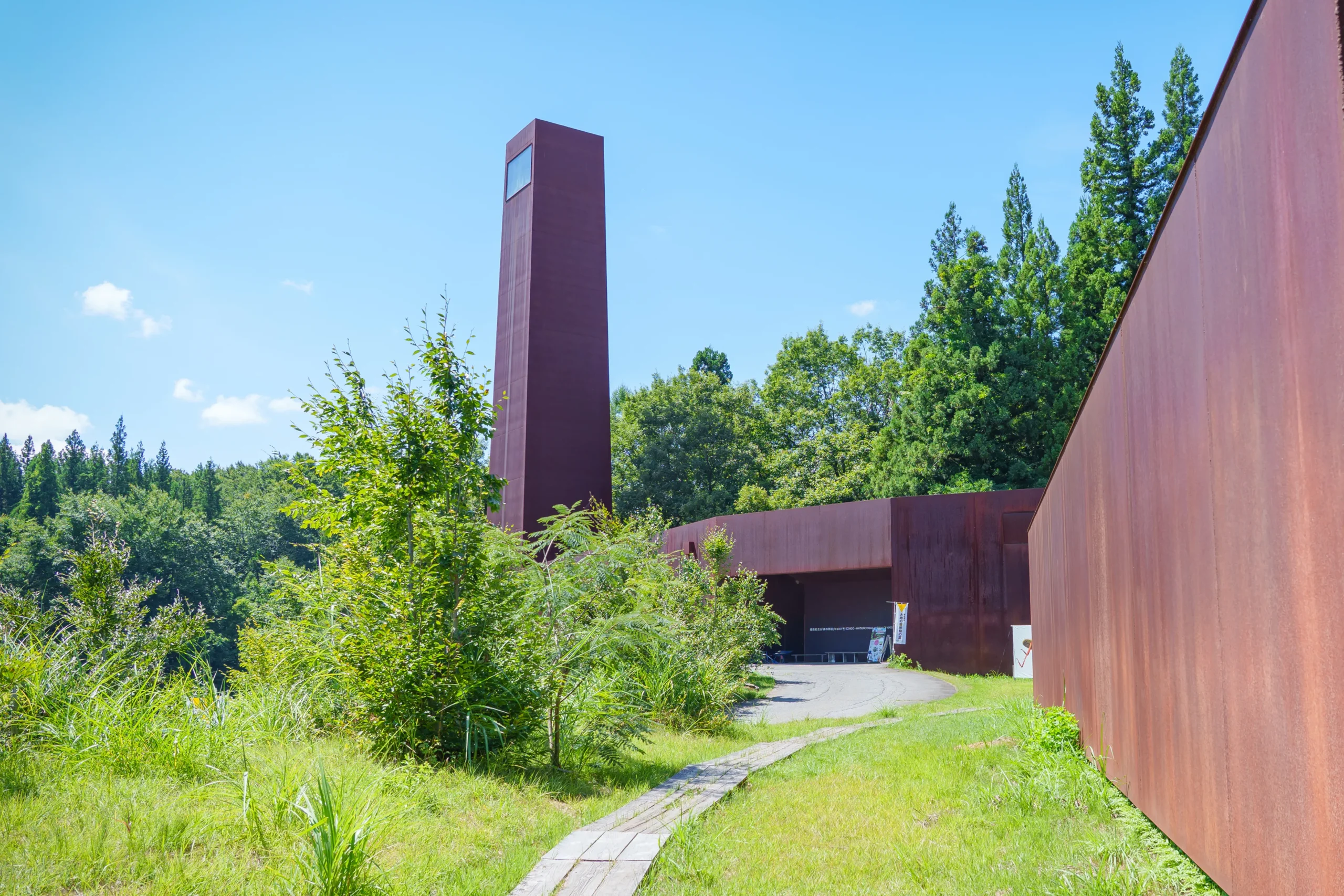
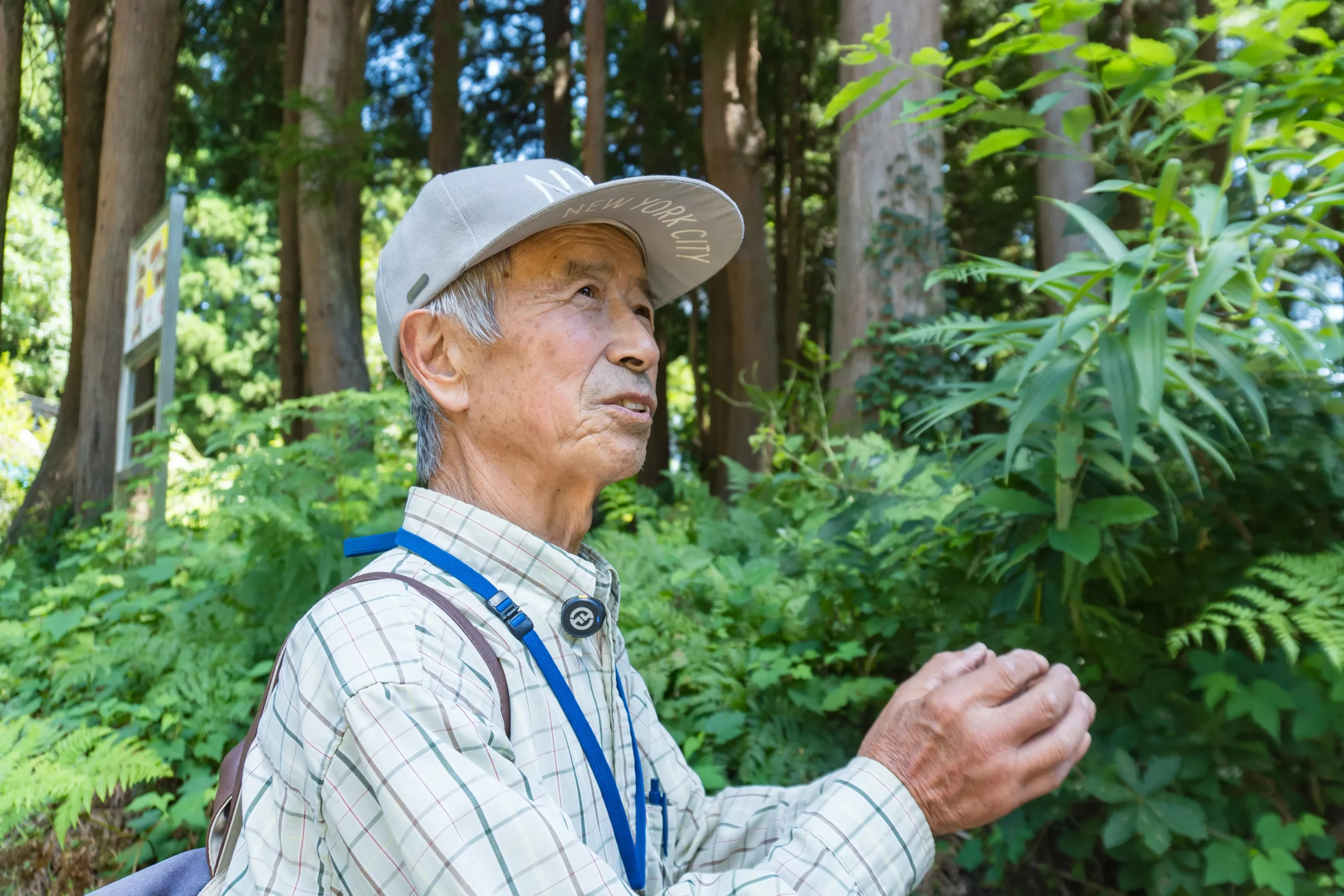

What is Bijin Forest?
Spanning the hills of Matsunoyama in Tokamachi City, Niigata Prefecture, the “Bijin Forest” is a fantastical grove where approximately 3,000 beech trees, each about 100 years old, stand in slender, orderly rows across a 3-hectare site. Although the trees were once cut down for charcoal production in the late Taisho era, the following year the beech trees sprouted en masse and grew to nearly the same height and thickness. Their beautiful, upright form earned them the epithet “beautiful women.”
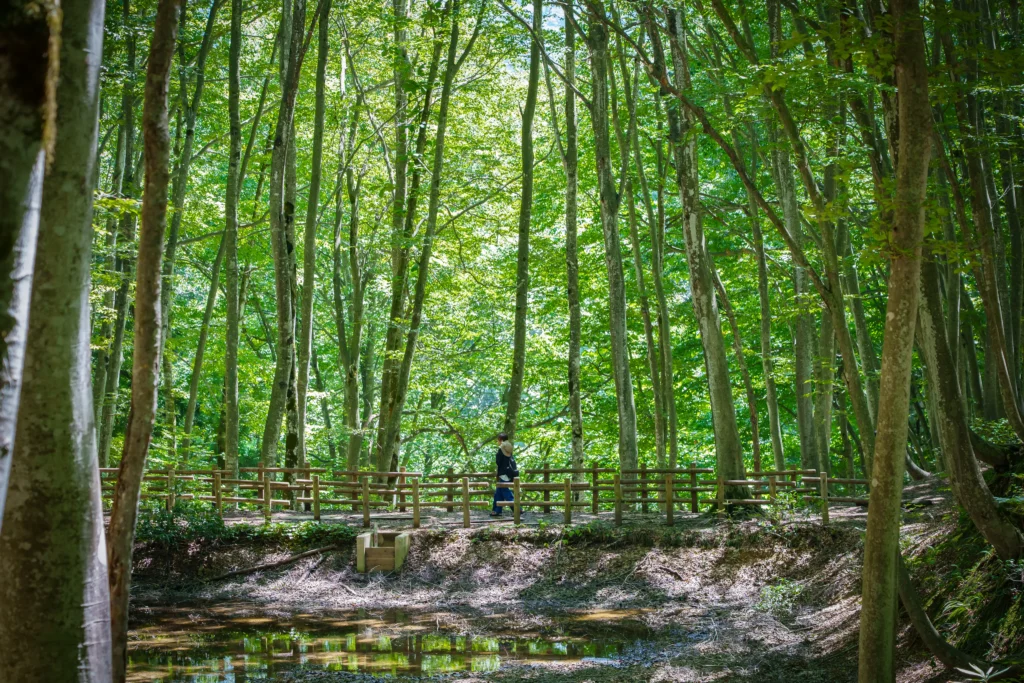
Beech is a representative deciduous broadleaf tree species in Japan, characterized by its white, straight trunk. Such an orderly beech forest is rare in Japan and has become a symbol of Matsunoyama tourism, attracting about 100,000 visitors annually. Generally, beech trees grow at elevations above 1,000 meters, but the Bijin Forest is located at a mere 300 meters. This area is a heavy snowfall zone, and it is said that the winter climate here resembles the cold climate of higher elevations, allowing beech trees to thrive.
The forest floor of Bijin Forest is covered in soft fallen leaves, and with few elevation changes, it’s easy to stroll through. You can walk around the entire forest in about 30 minutes. Inside the forest is a small pond. Especially in summer, the water surface becomes a “mirror” reflecting the trees, making it a popular spot for photographers. It’s also known for being home to many wild birds. As you walk through the quiet forest, you can hear birds singing here and there.
Nearby is the Kyororo Forest School science museum, which introduces the satoyama ecosystem, offering opportunities to learn about the forest’s nature and culture.
The scenery of Bijinbayashi, woven together by the four seasons
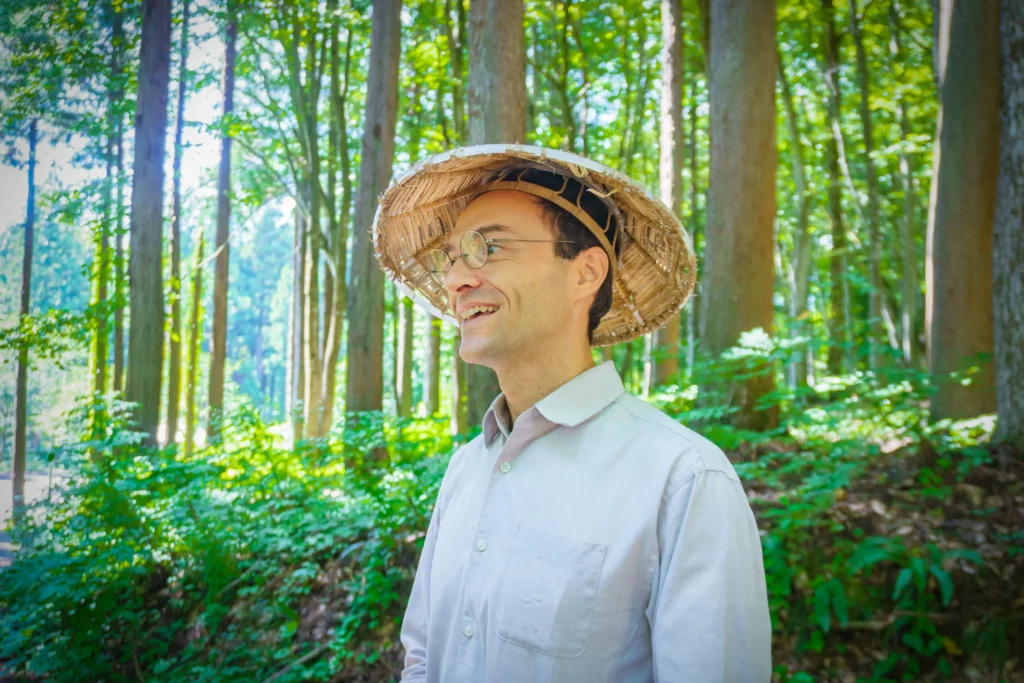
Bijin Forest displays different expressions throughout the seasons. In early spring, yellow-green young leaves sprout from the remaining snow, offering a delightful contrast of white and green. Plants typically begin sprouting around mid-April, with the peak season for fresh greenery occurring from late April to early May.
In summer, the beech trees turn a vibrant green, creating a refreshing forest. The Bijinbayashi Forest is said to be about 2°C cooler than the surrounding area, making it a pleasant place to enjoy a relaxing forest walk surrounded by gentle sunlight filtering through the leaves.
In autumn, the leaves turn yellow and orange, and fallen leaves spread like a carpet. The peak of autumn colors is from early to mid-November, and even after the leaves fall, the sight of orange leaves covering the ground is renowned for its beauty.

The area around Bijin Forest is a heavy snowfall zone where 2 to 3 meters of snow accumulates in winter, creating a “silver world” with snow-laden beech branches. On clear days, the snow sparkles brilliantly, and snowshoe tours through the white forest are popular.
If you want to capture your travel memories in photos, ponds are essential shooting spots. On windless days especially, the water reflects the beech trees, creating a fantastical, symmetrical landscape where the trees shimmer and sparkle on the surface.
This beautiful forest reveals a different face with each visit, showcasing distinct seasonal expressions: budding in spring, vibrant green in summer, autumn foliage, and snowy landscapes in winter. Upon closer inspection, many trees display a “root-bent” trunk, where the base curves into a J-shape. This occurs when the weight of snow crushes the tree, naturally bending the wood into this distinctive form.
Highlights of the Bijin Forest




Signboard


Exhibit
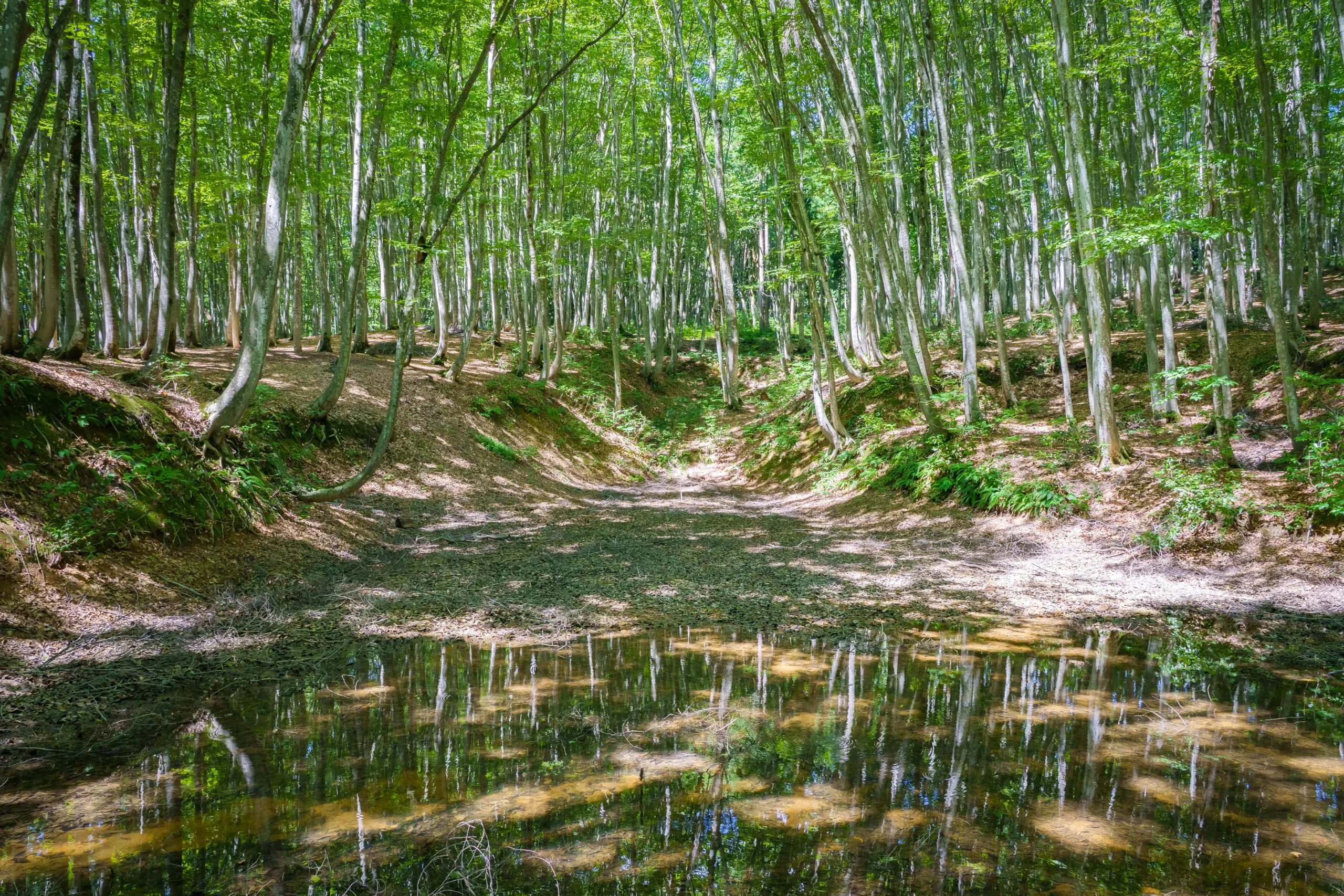

Inside Bijin Forest
How to Enjoy & Recommended Activities
The base for sightseeing is Matsudai Station on the Hokuhoku Line. The entrance to Bijin Forest is about a 15-minute taxi ride from the station. Bus transportation is also available, but buses do not operate during winter.
Exploring the forest itself requires no reservation and is free, but participating in an experience program led by a local guide enhances the enjoyment. From spring to autumn, the “Heart-Beautiful Hiking” program offers tours of Bijin Forest guided by local “Satoyama Blessings Guides.” You’ll walk leisurely while learning about wild birds and plants. The tour extends beyond Bijin Forest to the Suyama Forest, a treasure trove of wild birds. You’re sure to discover something new within the seemingly ordinary forest scenery.


In winter, the aforementioned snowshoe experience is popular, with guides accompanying participants to teach walking techniques on snow and point out highlights. Reservations for all activities can be made up to two days prior via the booking site (https://manma.be/experience-plan/).
On sunny days, exploring the area on the electric-assist sports-type “Satoyama E-Bike” is also recommended. Bicycle rentals are available at the Matsushiro/Matsunoyama Hot Springs Tourist Information Center inside the Roadside Station Matsudai Furusato Kaikan. These bikes make it easy to navigate the hilly terrain. Rental fees are ¥2,000 for 4 hours or ¥3,000 for a full day (tax included), available from late April to November.
Enjoy overnight stays or day trips for bathing at Matsunoyama Hot Springs, just a 10-minute drive from Bijin Forest. We also recommend exploring the artworks scattered throughout the region during the “Echigo-Tsumari Art Triennale.” Furthermore, the Tokamachi City Satoyama Science Museum “Forest School Kyororo,” located near the forest, offers exhibits introducing the biodiversity of satoyama landscapes. Seasonal experience programs, such as insect collecting and woodworking workshops, are also held.
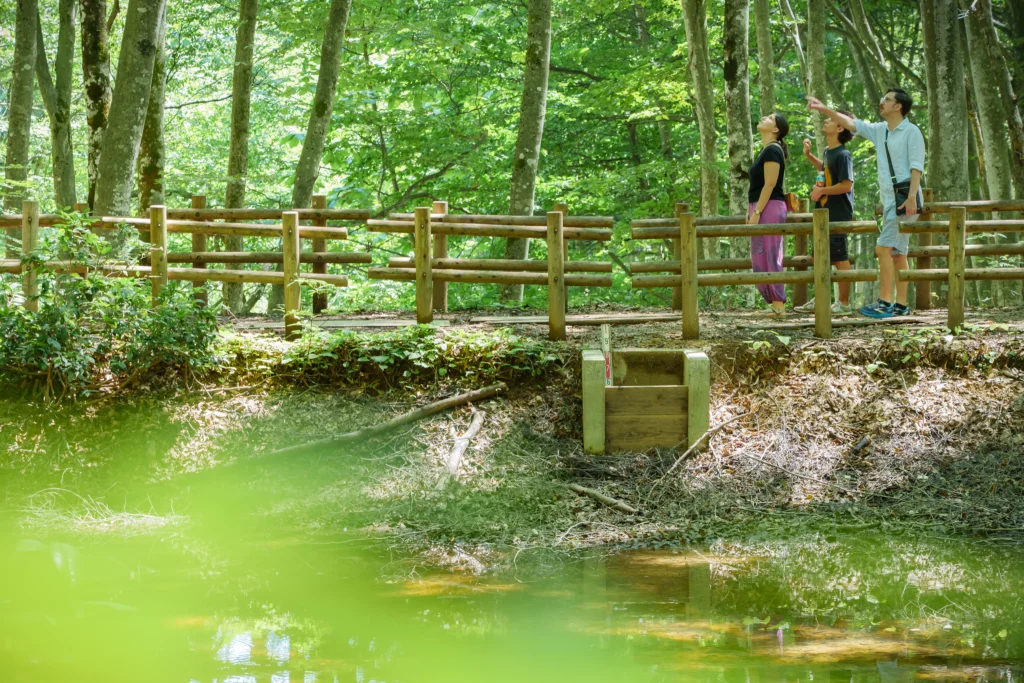
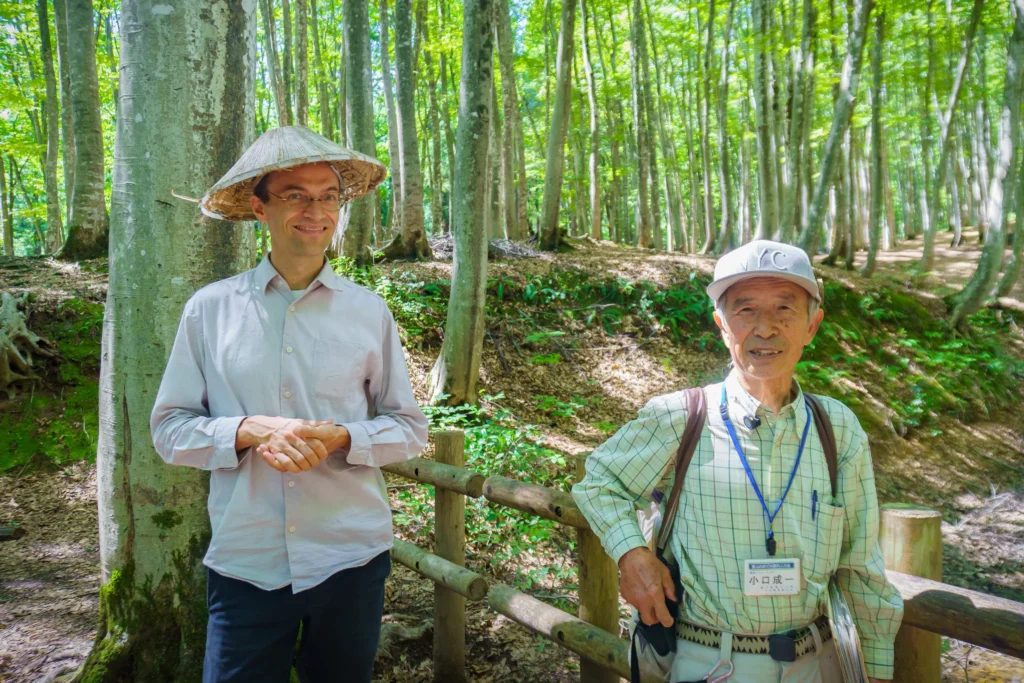
When visiting, choose clothing and gear according to the season. Waterproof shoes are recommended in spring as residual snow may remain. In summer, bring insect repellent as mosquitoes and gnats are present. In autumn, bring a light jacket as mornings and evenings can be chilly. In winter, deep snow requires boots or snow boots; renting snowshoes makes walking easier.
Basic Information
Spot Name: Bijinbayashi (Bijin Forest)
Opening Hours/Closing Days: Open year-round. Nighttime viewing is not possible due to lack of lighting. Some sections are closed in winter due to snowfall.
Fee: Free admission
*Guided tours and bicycle rentals incur additional fees.
Official Website: https://www.tokamachishikankou.jp/spot/bijinbayashi/
Tour reservation website: https://manma.be/experience-plan/
Live camera URL:https://www.matsunoyama.com/live-camera
Parking:Approximately 30 standard-sized vehicles. Please use the “Kyororo Forest School” parking lot during the winter, as snow removal is not available.
Best time to view: Fresh greenery in early May, autumn foliage in early to mid-November, snowscapes from December to April.
Restrooms: There are restrooms within the forest, but they are closed at night.
Nearby facilities: There is an unmanned stand nearby selling local and wild vegetables from May to November (closed Thursdays).
Access
1225-1, Matsuguchi, Matsunoyama, Tokamachi City, Niigata Prefecture, 942-1411
- Car: Approximately 50-60 minutes via National Route 353 from Echigo-Kawaguchi IC or Shiozawa-Ishiuchi IC on the Kan’etsu Expressway.
*In winter, winter tires are required when entering from the Sakashita entrance on Route 353, and the Sakaimatsu entrance is closed. - Train: From Echigo-Yuzawa Station on the Joetsu Shinkansen, take the Hokuetsu Kyuko Hokuhoku Line to Matsudai Station, then take a taxi for approximately 15 minutes.
- Bus: Take the Tokubi Bus bound for Matsunoyama Onsen, get off at the Sakaimatsu bus stop, and walk for approximately 20 minutes (service suspended in winter).
- Other: You can also rent a Satoyama E-Bike from Matsudai Station on the Hokuetsu Kyuko Hokuhoku Line and cycle to the area.

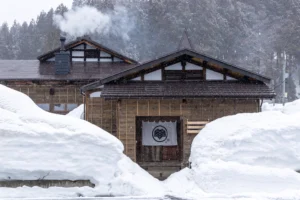


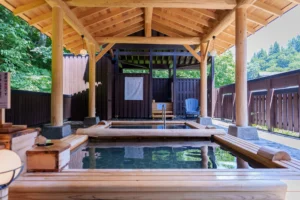

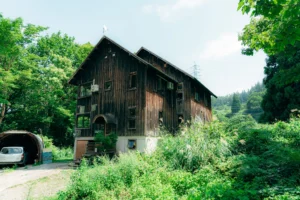

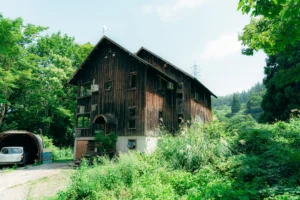
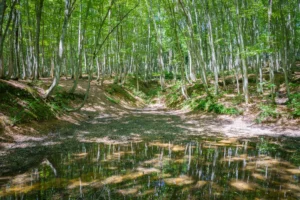

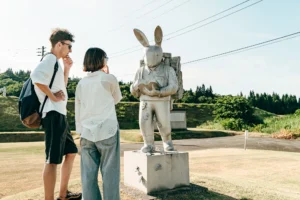


Bijin Forest